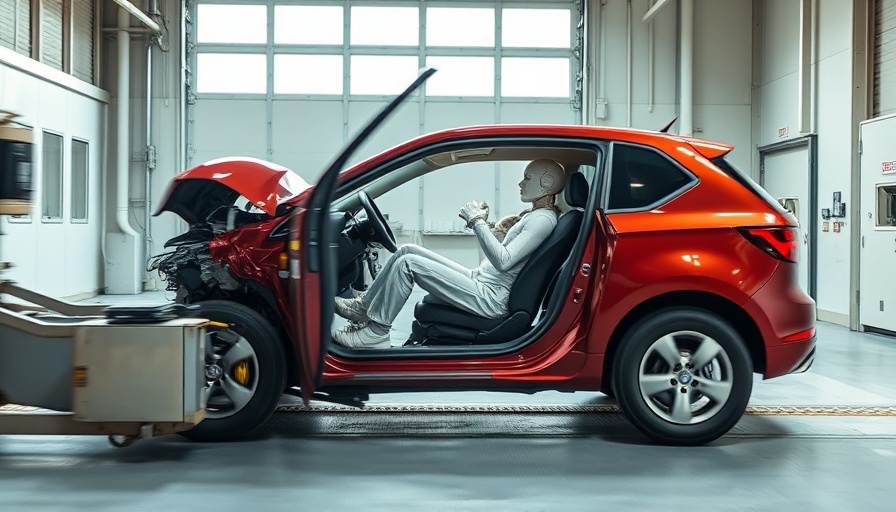
A Hidden Lifesaver: Understanding Car Crumple Zones
In a world where safety features in vehicles are paramount, it’s essential to appreciate the intricacies of how our cars manage to protect us during collisions. The crumple zone is a vital component that often doesn’t receive the attention it deserves, yet its role in car safety is undeniable. Simply put, a crumple zone is an area designed to absorb the energy of a crash, significantly reducing the risk of injury for occupants.
The Physics Behind Crumple Zones
Why would anyone want their car to crumple? At first glance, this design may seem counterintuitive; however, understanding the physics behind it reveals its brilliance. Crumple zones work by dissipating kinetic energy during a collision. When two vehicles collide, the force generated can be immense. According to car safety standards, this force needs to be absorbed, and crumple zones do just that.
As highlighted by Volkswagen, the energy is primarily absorbed in the crumple zones rather than transmitted into the passenger cabin. This distribution of impact prevents serious injuries to the driver and passengers alike. Without these specially designed zones, occupants would experience concentrated forces, leading to more severe outcomes, including fatalities.
How Crumple Zones Save Lives
The effectiveness of crumple zones has been demonstrated time and again. Vehicles equipped with robust crumple zones significantly increase the chances of survival in serious collisions. Michael Brooks, an automotive expert, raised concerns about vehicles like the Tesla Cybertruck, which due to their rigid design may lack adequate crumple zones. A vehicle that doesn’t crumple could transfer more force directly onto its occupants, thus heightening the risk of injuries.
Statistics reveal that modern vehicles equipped with crumple zones can absorb approximately 25% of the impact force, making a crucial difference in high-speed crashes. Older cars, by contrast, transferred that force directly to passengers, resulting in higher injury rates. The evolution of crumple zones has been a monumental leap forward, providing a buffer that literally translates to lives saved.
The Ongoing Evolution of Vehicle Safety
Automobile manufacturers continuously strive to improve vehicle safety features, and crumple zones are no exception. Testing and innovation are key to enhancing these mechanisms. Both the National Highway Traffic Safety Administration (NHTSA) and the Insurance Institute for Highway Safety (IIHS) conduct rigorous testing on crumple zones, ensuring they perform effectively under various conditions.
As crumple zone technology progresses, the focus is not just on frontal or rear impacts but also on side collisions, which traditionally have fewer absorbent structures in place. New materials and design innovations are being explored to create crumple zones that are effective from all angles to further enhance occupant safety.
Practical Safety Measures to Complement Crumple Zones
While crumple zones are essential, they are just one part of the broader vehicle safety ecosystem. To maximize protection, it’s crucial for drivers to adopt practices that minimize the risk of accidents altogether. Wearing seat belts, adhering to speed limits, and staying alert can dramatically mitigate injury severity.
Even with the best safety features, the unpredictable nature of road traffic can lead to accidents. That is why understanding crumple zones—as part of a whole suite of safety features—empowers drivers. It inspires confidence in their vehicles while urging them to remain vigilant to prevent collisions.
Your Piece of the Puzzle: Informed Choices
The more you know about vehicle safety, the better equipped you are to make informed decisions. When considering a new vehicle, prioritize safety ratings and inquire about the effectiveness of its crumple zones. A well-informed consumer is essential to ensuring that they, along with their loved ones, are protected on the road.
Final Reflection
Understanding the importance of crumple zones equips drivers with knowledge that could very well save lives. As technology advances, both safety features and consumer awareness must evolve. Whether you’re in the market for a new car or simply want to educate yourself about vehicle safety, make it a priority to stay informed.



Write A Comment